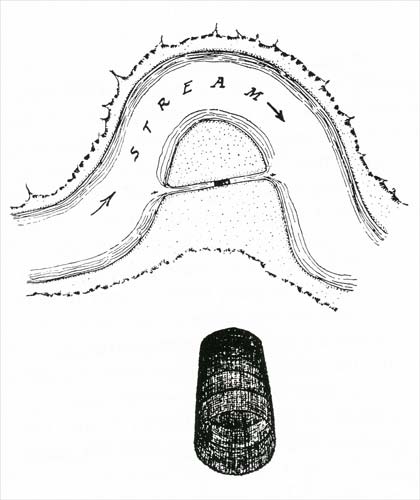
Whitebait are caught as they swim upstream from the sea in spring. In the past Māori also caught adult īnanga in autumn as the fish made their way downstream to spawn in estuaries. One method involved cutting a channel through a bar of gravel in a stream bed. A woven flax trap known as a kaka was placed in the channel. It had an open upstream end and a closed downstream end. Water could flow through, but the tight weave would catch the fish as they swam downstream.
Using this item
Te Ara - The Encyclopedia of New Zealand
Reference:
Elsdon Best, Fishing methods and devices of the Maori. Wellington: Dominion Museum, 1929, p. 206
This item has been provided for private study purposes (such as school projects, family and local history research) and any published reproduction (print or electronic) may infringe copyright law. It is the responsibility of the user of any material to obtain clearance from the copyright holder.









Add new comment